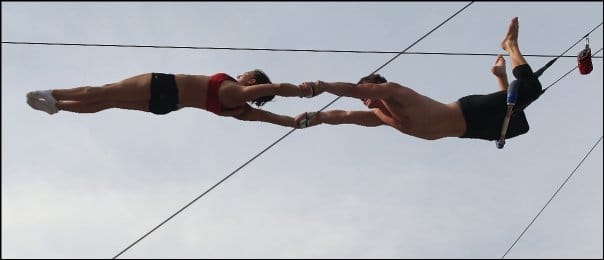Let’s take a trip down memory lane. Here is where this whole Method Behind the Madness series began:
“Though it may seem like a random journey from trick to trick sometimes, there is, in fact, method to the madness. At TSNY, we have a carefully developed curriculum that is aimed at developing essential skills alongside your trick-to-trick progression. The overarching goal is to help you to become the best and most capable flyer you can be. Along the way, we encourage you to develop an awareness of standard practices and safety, so that you can take an increasing level of ownership of your flying as you progress to higher and higher levels. The goal of this segment will be to peak behind the curtain, so to speak, to clarify just what key skills and concepts you should be taking away from each trick that you practice.”
Since that first entry in this series, we’ve touched on a number of different topics and elaborated on some of the thinking that underpins the way we progress students through various skills and tricks on the flying trapeze. My hope is that in so doing, we’ve provided you with a greater degree of understanding. Thus far, we have discussed the key skills to be learned as you make your way from that first Knee Hang catch through your early “set” tricks (and, for the sake of being explicit, those are: catch hands, developing a tight body position at catch point, landing in the net on your stomach, and the one-handed takeoff). We took a brief (almost too brief) look at the swing and catching basic backend tricks (the ones on Level 3 of the Tricks Chart). Catching a backend trick is the perfect introduction for what is perhaps the biggest focus of the first four stages (or Levels) of the TSNY Flying Trapeze Curriculum: learning the skills required for not only catching a backend trick, but making a successful return to the platform. After you’ve made a successful return (or three), many flyers’ eyes often turn to throwing bigger tricks, so last month we turned our attention there. But here’s the thing: we have been by no means exhaustive. There is still so much more for us to discuss.
To that end, this month we have something new—and potentially exciting for you: the “Tip of the Month” is now online! (This should be obvious by now if you’ve read this far). Not only does this mean the TSNY Monthly Newsletter will be a smaller, easier to digest email for you, but having this material accessible and on the world wide interwebs will give you the opportunity to submit comments and/or questions to any given post. You can even submit requests for topics to be covered in future posts. In return, I will endeavor to respond to your comments and questions in a timely manner. As we begin this experiment, there are a couple of things I would like to make clear.
Let’s come back to where we started. The “Tip of the Month” has been a feature in the TSNY Boston newsletter for some time (I’ve added the archives to the blog) and I’ve always been a bit at odds with the title because I’ve always found the best flying “tips” are personalized. You see, flying trapeze is rather unique in that there is no one “right” way to perform any given trick or skill. (That being said, there are plenty of “wrong” ways to do things on the flying trapeze). So my primary goal in writing these monthly tidbits is to find a way to provide helpful—yet general—advice and/or insights. The key for anyone reading will be to take the useful (and not at all useful) information you gleam from here and work with your Instructors to find out what works for you.
The next thing to make sure we all understand is why we do things the way we do. Why did Trapeze School New York create such a structured curriculum for our students to follow? Let’s start with what should be obvious: our goal is to help you build a solid foundation of skills, awareness, strength and fitness that will allow you to not only be the best flyer your can be, but also to enjoy a long, safe and healthy career as a flyer. There is also a not-so-obvious idea behind it—the method behind the madness, if you will. That is that the Curriculum is a template that helps us to find the best progression for each individual student. This template allows us to approach your learning and development as a flyer in an intelligent and ordered manner so that we can make sure we cover the fundamentals first before moving on to more complicated or demanding elements.
With those two ideas in mind, let’s be clear: the “Tip of the Month” does not pretend to be espousing the only way or the one right way of doing anything. It is, however, intended to be a place where we share with you our evolving thoughts on the art and science of teaching, learning and coaching flying trapeze. In fact, I might suggest we rename this feature Method Behind the Madness …
From here, I would like to dedicate future posts to a somewhat more in-depth look at things like why we include trampoline in the Curriculum and why we should take Strength & Conditioning so seriously. In the meantime, thanks for reading!

